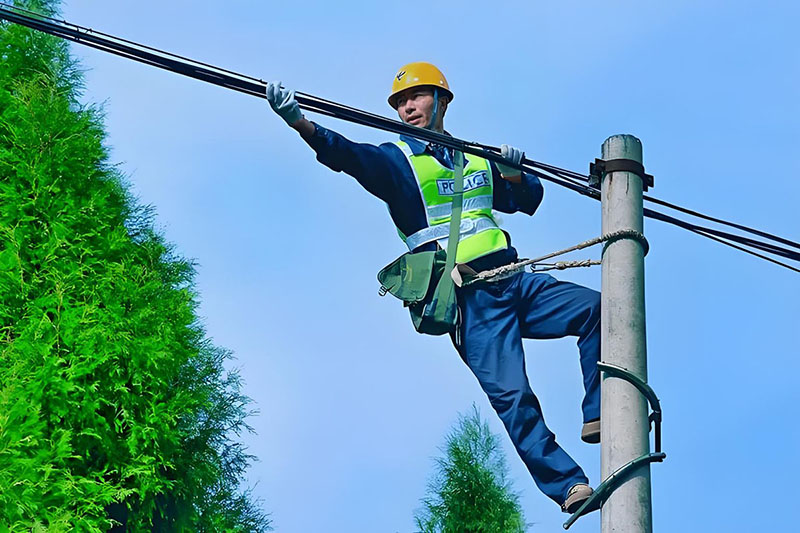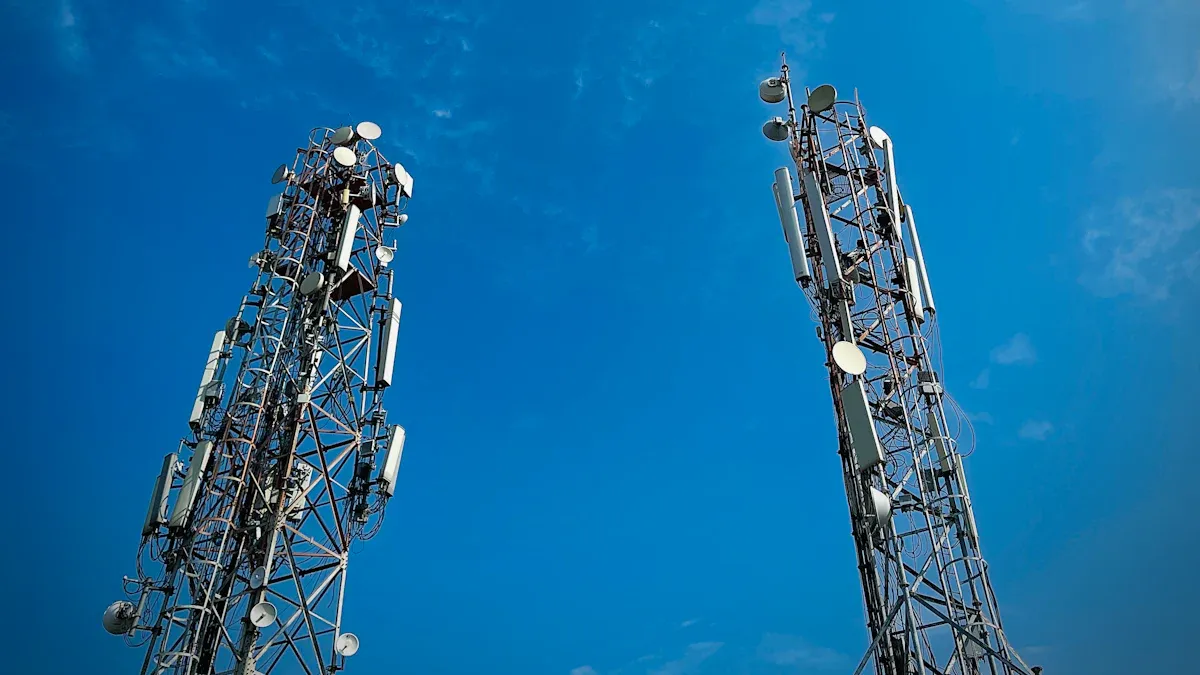
You rely on fast, reliable internet every day. Fiber optic cables make this possible by transmitting data at lightning speed. They form the backbone of 5G networks, ensuring low latency and high performance. Whether it’s FTTH cable for homes or indoor fiber cable for offices, these technologies power seamless connectivity.
Key Takeaways
- Fiber optic cables are key for 5G, offering fast and steady connections.
- Building fiber networks now readies systems for future tech and saves money.
- Fiber cables bring fast internet to all, no matter where they live.
Understanding 5G and Its Infrastructure Needs
What Sets 5G Apart: Speed, Latency, and Connectivity
You’ve probably heard that 5G is faster than any previous generation of wireless technology. But what makes it truly revolutionary? First, 5G delivers speeds up to 100 times faster than 4G. This means downloading a full movie takes seconds instead of minutes. Second, it offers ultra-low latency, which reduces the delay between sending and receiving data. This is critical for applications like online gaming and autonomous vehicles. Finally, 5G connects more devices simultaneously, making it ideal for smart homes and cities. These features set 5G apart, but they also demand a robust infrastructure to function effectively.
The Infrastructure Demands of 5G Technology
To achieve its full potential, 5G requires a dense network of small cell towers and high-capacity connections. These small cells need to be placed closer together than traditional towers, often just a few hundred meters apart. They rely on high-speed backhaul connections to transmit data to the core network. This is where fiber optic cables come in. Their ability to handle massive amounts of data at high speeds makes them essential for 5G infrastructure. Without them, the network would struggle to meet the demands of modern connectivity.
Overcoming Challenges in 5G Deployment
Deploying 5G isn’t without its challenges. You might notice that installing small cells in urban areas can be complicated due to space constraints and local regulations. Rural areas face a different issue—limited infrastructure. Fiber optic cables play a key role in overcoming these challenges. Their scalability and reliability make them the ideal solution for connecting even the most remote locations. By investing in fiber networks, providers can ensure that 5G reaches everyone, everywhere.
Fiber Optic Cables: The Backbone of 5G Networks

Why Fiber Optics Are Essential for 5G Backhaul
Fiber optic cables play a critical role in 5G backhaul, which connects small cell towers to the core network. You need this connection to ensure that data travels quickly and reliably between devices and the internet. Unlike traditional copper cables, fiber optic cables can handle the massive data loads required by 5G. They transmit information using light, which allows for faster speeds and greater capacity. This makes them the ideal choice for supporting the high-performance demands of 5G networks.
Enabling High-Speed Data Transmission with Fiber Optics
When you think about 5G, speed is one of its most exciting features. Fiber optic cables make this speed possible. They can transmit data over long distances without losing quality. This ensures that you experience consistent performance, whether you’re streaming videos, playing online games, or using cloud-based applications. Fiber optics also reduce latency, which is the delay in data transfer. This is especially important for technologies like virtual reality and autonomous vehicles, where even a slight delay can cause problems.
Supporting Home Internet and IoT with Fiber Optic Networks
Fiber optic cables don’t just power 5G; they also enhance your home internet and IoT devices. With fiber optics, you can enjoy faster and more reliable internet connections. This is essential for smart home devices, which rely on constant connectivity to function properly. From smart thermostats to security cameras, fiber optics ensure that your devices work seamlessly. They also provide the bandwidth needed to support multiple devices at once, making them perfect for modern households.
The Case for Investing in Fiber Optic Infrastructure

Scaling Fiber Networks to Meet 5G Demands
You’ve seen how 5G relies on a dense network of small cells and high-speed backhaul connections. Scaling fiber networks is the only way to meet these demands. Fiber optic cables provide the capacity and speed needed to handle the exponential growth in data traffic. Expanding these networks involves laying more cables and upgrading existing infrastructure. This ensures that 5G can deliver consistent performance, even in areas with high user density. Without this investment, the network would face bottlenecks, slowing down your connection and reducing reliability.
Tip: Investing in fiber infrastructure today prepares your network for future technologies like 6G and beyond.
Long-Term Advantages of Fiber Optic Investments
When you invest in fiber optic infrastructure, you’re not just solving today’s problems. You’re building a foundation for decades of connectivity. Fiber optic cables are durable and require less maintenance compared to older technologies like copper. They also offer virtually unlimited bandwidth, making them future-proof. This means you won’t need frequent upgrades as data demands grow. Over time, this reduces costs and ensures that your network stays ahead of technological advancements.
Fiber Optics and the Future of Global Connectivity
Fiber optic cables are shaping the future of global connectivity. They enable faster internet speeds, support emerging technologies, and connect even the most remote regions. As 5G adoption grows, fiber optics will play a key role in bridging the digital divide. This ensures that everyone, regardless of location, can access high-speed internet. By investing in fiber networks, you contribute to a more connected and equitable world.
Note: Fiber optics are not just about speed. They’re about creating opportunities for education, healthcare, and economic growth worldwide.
Fiber optic cables form the backbone of 5G networks. They deliver the speed, reliability, and scalability you need for modern connectivity. Investing in this infrastructure ensures 5G reaches its full potential. As 5G adoption grows, fiber optics will continue to support seamless connectivity and drive future technological advancements.
FAQ
What makes fiber optic cables better than copper cables for 5G?
Fiber optic cables transmit data using light, offering faster speeds, higher bandwidth, and lower latency. Copper cables cannot handle the massive data demands of 5G networks.
How do fiber optic cables support smart cities?
Fiber optics provide the high-speed, reliable connectivity needed for smart city technologies. They enable real-time data sharing for traffic management, public safety, and energy efficiency.
Are fiber optic cables future-proof?
Yes, fiber optic cables offer virtually unlimited bandwidth. This makes them capable of supporting future technologies like 6G and beyond without frequent upgrades.
Tip: Investing in fiber optics today ensures your network stays ahead of future connectivity demands.
Post time: Feb-20-2025
